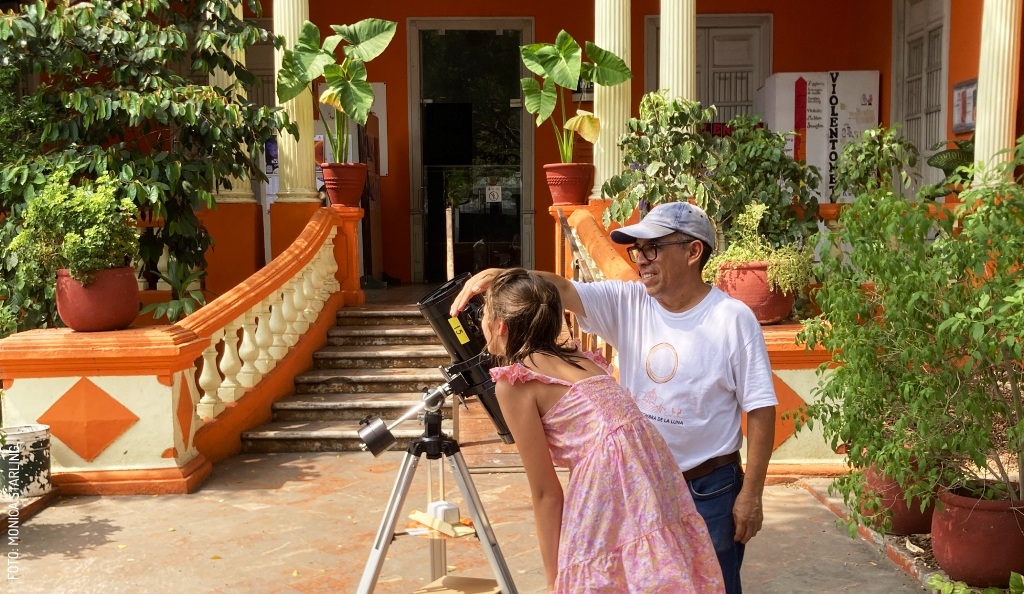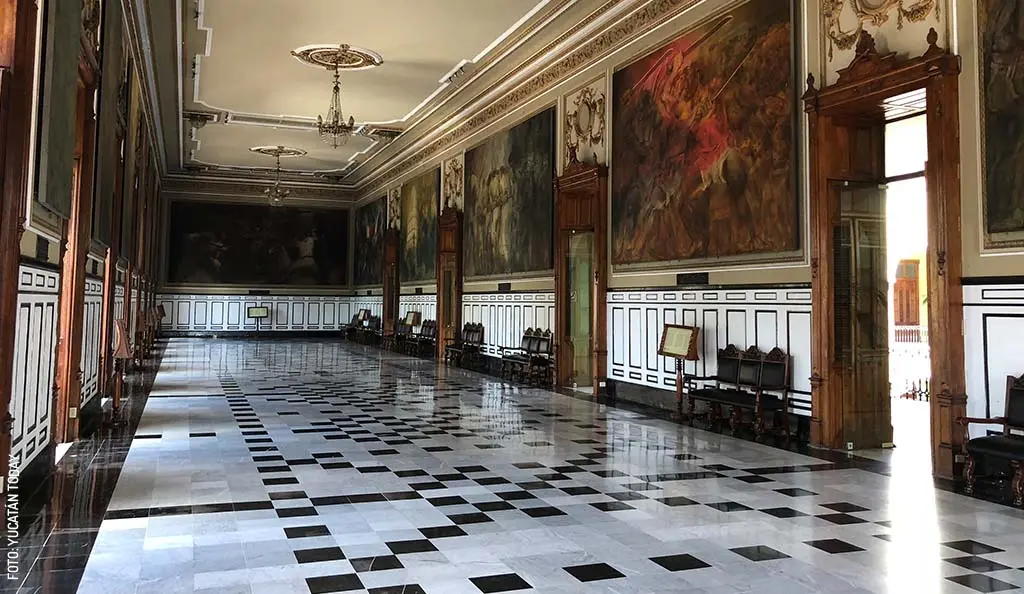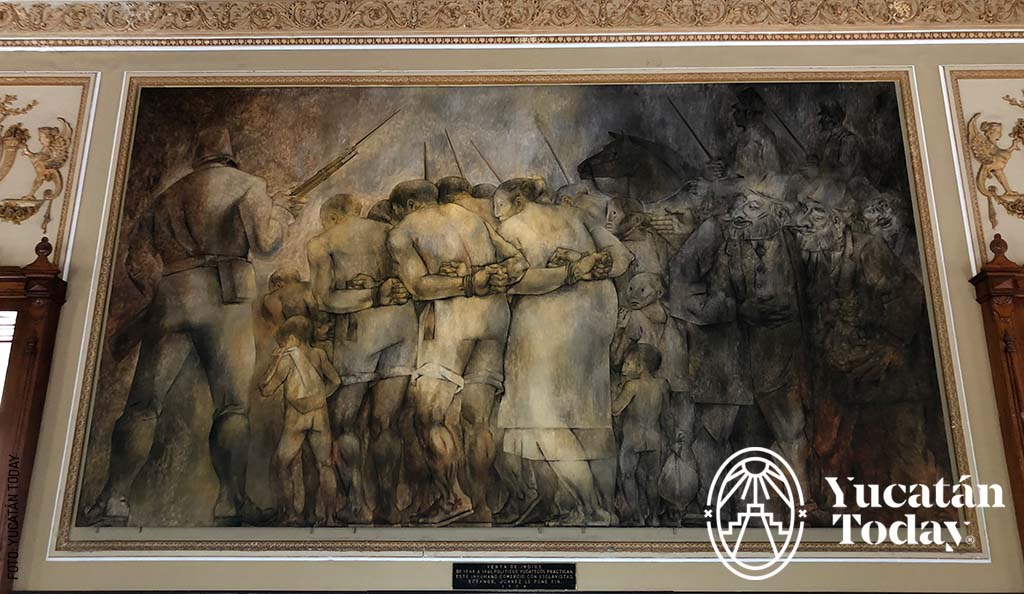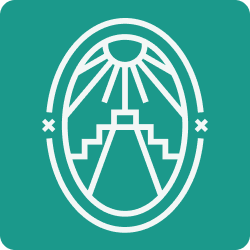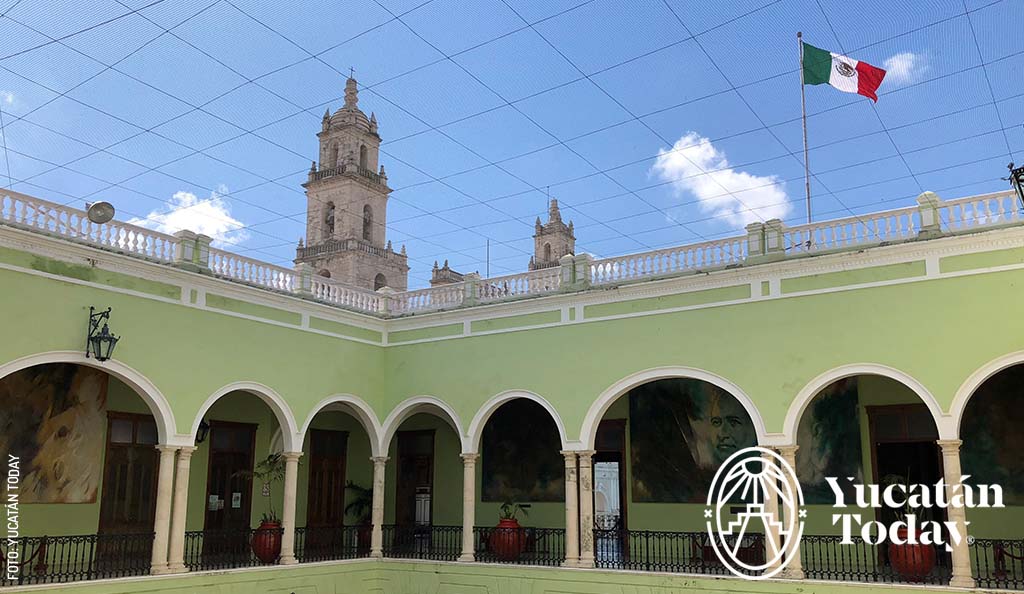
If you're visiting Mérida or lucky enough to call it home, you've undoubtedly seen countless buildings dedicated to preserving the memory of this land. One such example is the Government Palace (Palacio de Gobierno), a pistachio-green sentinel firmly rooted on calle 61, facing the city's central square, Plaza Grande. You've surely glimpsed it.
The Palace itself is a beauty, but today, we won't focus on its architecture. Instead, we'll delve into the pictorial treasure within: "History of Yucatán" (Historia de Yucatán) by renowned Yucatecan muralist Fernando Castro Pacheco.
Who Was Fernando Castro Pacheco?
Fernando Castro Pacheco (1918-2013) was a painter, muralist, sculptor, printmaker, and illustrator born in Mérida. He began his formal artistic training at the Mérida College of Art at age 15. Six years later, he completed his first wood and linoleum engravings. At just 29, he helped establish the Free School of Graphic Arts of Yucatán (Escuela Libre de Artes Plásticas de Yucatán). In 1943, Castro Pacheco moved to Mexico City, where he began participating in national and international exhibitions, which earned him global recognition.
The Murals of the Yucatán Government Palace
This impressive collection, which Castro Pacheco created between 1971 and 1975, consists of 27 oil paintings on galvanized steel sheets. Due to their imposing size (and spirit), they are considered murals despite not being painted directly onto the walls. Each piece is striking as a work of art, but they resonate even more deeply when you understand the history they depict. Here, we'll provide context to help you appreciate some of them.
Upon entering the Government Palace, you're greeted by a central courtyard from which you can observe the paintings adorning the palace's corridors in a 360-degree view: two on the ground floor and six on the upper floor.
Ground Floor: "Social Evolution of Man in Yucatán"
The two "murals" on the ground floor are the longest in the entire palace. Titled "Social Evolution of Man in Yucatán" (Evolución Social del Hombre en Yucatán), they depict various stages of the Maya people's history: from their era of splendor and freedom, through the arrival of the colonizers, to their eventual liberation and modern times.
The first mural, located to your right as you enter from the main entrance, focuses on the glorious Pre-Hispanic Maya era. It showcases scenes of men hunting and fishing, constructing temples, and worshipping their gods. This mural also features the Maya priest Chilam Balam, who famously predicted the arrival of white men riding horses, bearing weapons, and bringing a new cross.
The second part, on the left side, illustrates the aftermath of the encounter with the Old World, particularly the brutality and violence of Spanish rule. However, it also highlights the role of Fray Bartolomé de las Casas as a defender of Indigenous Americans, surrounded by broken chains symbolizing the people's liberation. This same painting also includes images of the Maya Social War, or Caste War, and the beginnings of the Mexican Revolution.
The Staircase Murals: Maya Cosmogony
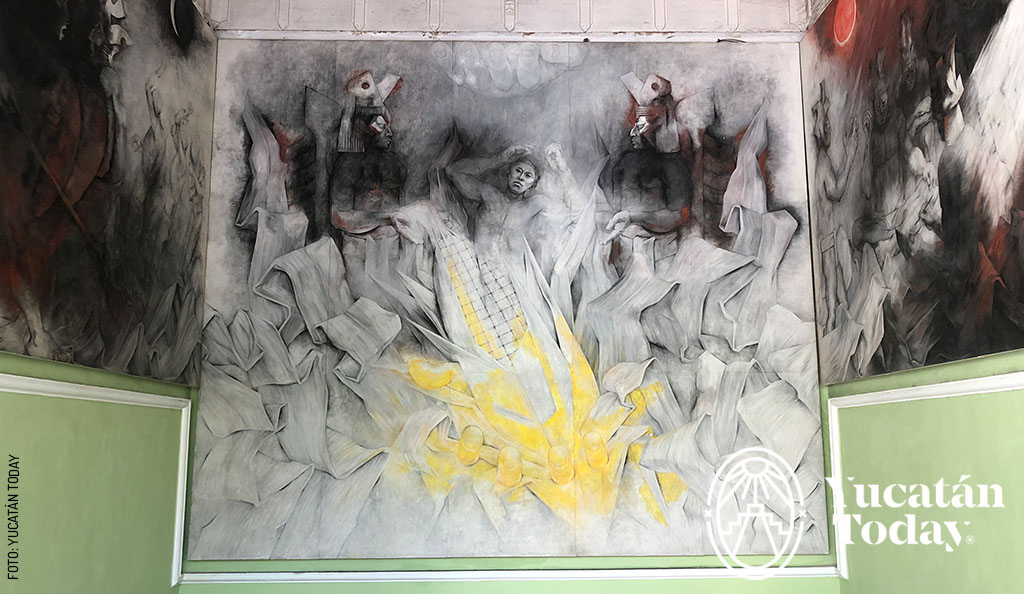
As you ascend to the upper floor, you'll get a better look at what are known as the "staircase murals", which beautifully narrate a part of Maya cosmogony.
According to the sacred book Popol Vuh, humanity was created from corn. In the central painting, we see man coming to life; as local poet Alfredo Barrera Vásquez described: "a great ear of corn, held by the generous hand of the south, reveals its kernels; and man, behind it, emerges and awakens from a dream." The "generous hand of the south" refers to one of the Bacabes, the four gods who hold up each corner of the sky and are associated with different colors; the south is yellow. It's no surprise then that the intense yellow of the central painting facing the stairs stands out against the predominant black and white colors. Here, the white Bacab holds the Ursa Major (Big Dipper) constellation, both associated with the north.
On either side, you'll see the auspicious red Bacab, symbolizing the East and representing the joy of the sun's daily rebirth, and the ominous black Bacab, accompanied by a jaguar. These represent the West, the place where the sun dies and shadows and danger emerge.
Upper Floor Corridors: Mexico and Yucatán
Once upstairs, if you choose to turn right, "Mexico's Eternal Struggle" (La Lucha Eterna de México) will greet you. This painting represents one of humanity's oldest conflicts: the struggle between good and evil. In Mexico, these elements are depicted, respectively, by the eagle and the serpent that form the national coat of arms.
However, if your feet lead you to the left, you'll see the stern face of General Salvador Alvarado. As Governor of Yucatán from 1915 to 1918, he is remembered to this day as one of the liberators of the Maya people, for implementing the precepts of the Mexican Revolution in Yucatán.
Finally, the three works framing the entrances to the "Hall of History" (Salón de la Historia) (where the rest of the collection is displayed) are: "Man on the March" (El Hombre en Marcha), "The Henequen Cutter's Hands" (Las Manos del Cortador de Henequén), and "Agrarian Reform" (Reforma Agraria).
The first two embody the feet and hands of the Maya man, who works the milpa (cornfield) and henequen fields, and knows the hardships inherent in agricultural labor. The last one portrays the faces of two passionate defenders of the Maya people: Yucatecan Governor Felipe Carrillo Puerto, and Mexican President Lázaro Cárdenas, known for the oil expropriation and the distribution of land to Maya farmers.
The Hall of History
The Hall of History (Salón de la Historia) is, on its own, a beautiful place to visit, offering stunning views of the Plaza Grande and its surroundings. It's from these very balconies that the constitutional governor of Yucatán commemorates the "Grito de Dolores" during the celebration of Mexico's Independence Day.
There are 17 "murals" within the Hall of History, all created between 1972 and 1974. On the north wall (behind you as you enter the room), you'll see five; the east and west walls each display one, and the south wall (where the balconies are) features ten. Together, these works provide a journey through the history of Yucatán from the arrival of the Spanish until the restoration of the Republic in 1867.
Each mural is impactful as a work of art, but they are best appreciated with a little knowledge of the history they represent. Here, we'll share some context for each.
Note: The paintings are not arranged in chronological order. For the purpose of this guide, we will list them as they are displayed. Stand facing the north wall (with your back to the Plaza Grande) and head to the last painting on the right side.
North wall
The Conquest (La Conquista)
"The Conquest" depicts the violent struggle between the Maya and the conquistadors. The Spanish began arriving in Yucatán from 1511 onwards. From the first contact, the Maya distrusted the newcomers and fought fiercely to repel them for over 180 years, with the last Maya stronghold surrendering to the Spanish in 1697. Nevertheless, in Yucatán, as in the rest of Mexico, both cultures eventually became inextricably intertwined. This is referenced by the plaque below this painting, which reads: "The Maya resisted Western intrusion for twenty years. Then, their culture conquered the conqueror."
Caste War (Guerra de Castas)
"A Maya social revolution that begins in 1847 and dissolves into historical rancor without political peace or armistice."
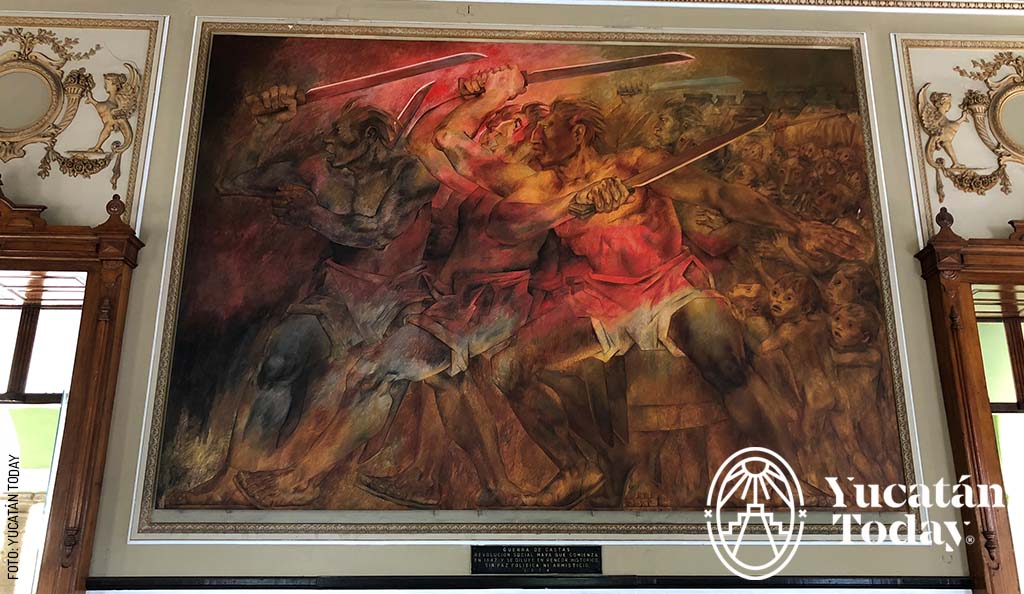 Mexico's independence was achieved in 1821, after 11 years of conflict. By then, Yucatán, which had been a relatively independent Captaincy, wished to maintain its autonomy even while being part of the new Mexican State. From that point onwards and for 20 years, the relationship between the governments was fraught, leading Yucatán to declare its independence from Mexico first in 1841 and then again in 1846. Throughout this period, Indigenous Maya people in Yucatán were constantly enlisted to fight the Mexican army as part of their obligations as "employees" of the hacienda owners. In 1847, led by chieftains Jacinto Pat and Cecilio Chí, the Indigenous people rose in a social war that would claim over a quarter of a million lives and ultimately forced Yucatán's return to the Mexican Republic.
Mexico's independence was achieved in 1821, after 11 years of conflict. By then, Yucatán, which had been a relatively independent Captaincy, wished to maintain its autonomy even while being part of the new Mexican State. From that point onwards and for 20 years, the relationship between the governments was fraught, leading Yucatán to declare its independence from Mexico first in 1841 and then again in 1846. Throughout this period, Indigenous Maya people in Yucatán were constantly enlisted to fight the Mexican army as part of their obligations as "employees" of the hacienda owners. In 1847, led by chieftains Jacinto Pat and Cecilio Chí, the Indigenous people rose in a social war that would claim over a quarter of a million lives and ultimately forced Yucatán's return to the Mexican Republic.
Sale of Indians (Venta de Indios)
"From 1848 to 1861, Yucatecan politicians practiced this inhuman trade with Cuban slave owners. Juárez puts an end to it."
Although slavery was abolished in Mexico as early as 1810, the reality was that Indigenous Maya were not free men. They worked in difficult conditions, their rights further limited by unpayable (and hereditary) debts incurred with their "patrons." These debts were one of the pretexts used to sell entire families, whose members were transported to Cuba as slaves. Although the practice was illegal, it was an open secret in Yucatecan society. It ended with a decree by President Benito Juárez, specifically prohibiting the removal of Maya people from Mexican territory.
Henequen (El Henequén)
"Plant native to Yucatán used by the Maya. Henequén generates an industry and a culture from the mid-19th century."
The Triumph of the Republic (El Triunfo de la República)
"Cepeda Peraza takes the city of Mérida, June 16, 1867."
Between 1855 and 1863, the promulgation of the Reform Laws in Mexico limited the Church's power over the country's life. These laws divided the country between Liberals (who supported these reforms) and Conservatives (who saw them as a threat to their way of life). The Conservatives, with the support of Napoleon III (who sought to turn México into a French protectorate), decided to establish a new Mexican empire, led by a European Catholic ruler. This responsibility fell to Archduke Maximilian of Austria, who became Emperor Maximilian I of Mexico. Maximilian I's government developed in parallel with that of Benito Juárez, and Mérida was one of the besieged cities during the struggle between both factions. After 56 days, and a month after Maximilian I's capture in 1867, General Manuel Cepeda Peraza achieved the surrender of the imperialists. On June 16, he took the city of Mérida with an army composed of both criollos (people of Spanish descent born in the Americas) and Maya, while the Caste War continued in the state's interior.
West wall
Of Colonial Life: The Torment of Jacinto Canek (De la vida colonial: el suplicio de Jacinto Canek)
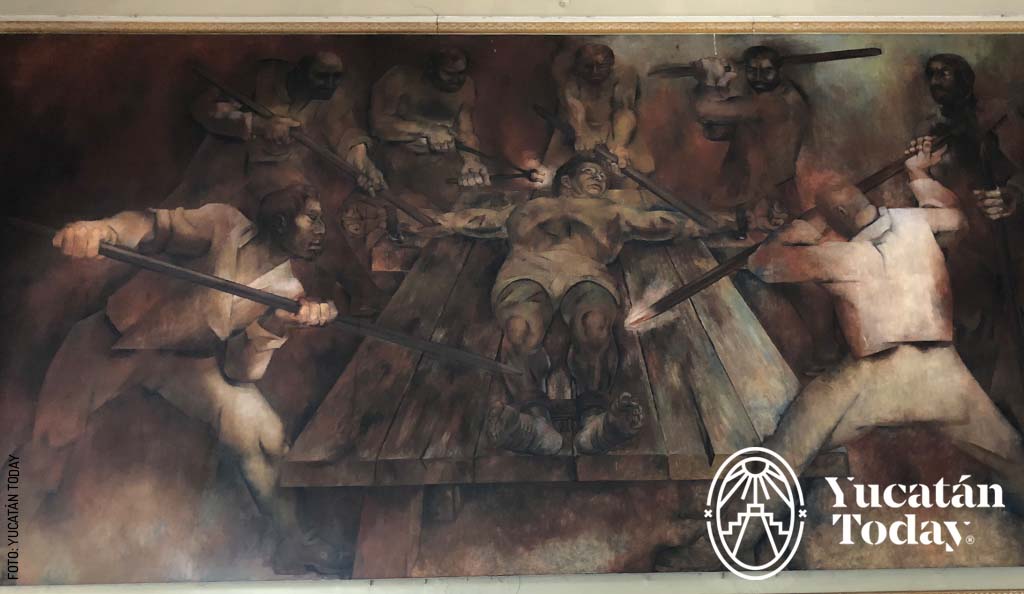
South wall
Instruments of Domination (Instrumentos de Dominación)
- Nachi Cocom: Cacique of Sotuta, symbolizing indomitable Maya resistance.
- Gonzalo Guerrero: Father of the first Mexican Mestizos in the cacicazgo (chieftainship) of Chetumal.
- Franciscos de Montejo (the Adelantado, the Son, and the Nephew): Subdued the Maya in 20 years and projected a vast Castilian viceroyalty with its capital in Ixcanzihó, where they founded Mérida in 1542.
- Fray Diego de Landa: Harsh inquisitor, benevolent bishop, and primary historian in the second half of the 16th century.
- Bishop Juan Gómez de Parada: Decreed the abolition of slavery in the first quarter of the 18th century.
- Drought, plague, and famine left ancestral uncertainty among the people.
- English pirates attacked the coasts in the 17th and 18th centuries and occupied Belize.
- Lucas de Gálvez: Governor and Captain General from 1789 to 1792, a progressive road builder.
- Printing Press: Don Manuel López Constante brought the first one from Havana.
East wall
Vicente María Velásquez Ignites Independence with the Sanjuanista Movement (Vicente María Velásquez enciende la independencia con el movimiento sanjuanista) Vicente María Velásquez was a Yucatecan priest who, prior to the outbreak of México's War of Independence, advocated for better living conditions for Indigenous Maya. On the terrace of the church under his charge, the Church of San Juan (calle 64x 67-A y 69-A), he began meeting with other liberal minds who sought to incorporate Enlightenment ideals into Yucatán's political life. Thus, the Sanjuanista Society was formed, which fought for freedom of expression and managed to reduce the fees charged to the Maya for receiving sacraments.
As you can see, these paintings not only stand out as key pieces in the Mexican muralist movement. They are works of art that safeguard the memory and, therefore, the soul of the people, capable of transmitting all the feelings associated with some of the most notable moments in the state's history—some filled with pride, others with shame. Don't miss the opportunity to see them for yourself.
Palacio de Gobierno del Estado de Yucatán
Calle 60 S/N x 61 y 59, Centro
Entrada gratuita
If you appreciate the rich visual arts of Yucatán, you won't want to miss the Centro Cultural Fernando Castro Pacheco on Paseo de Montejo. This cultural center showcases 47 significant works by one of Mexico's most renowned artists, Fernando Castro Pacheco, featuring oils, engravings, sculptures, and more, all housed in a space that also hosts vibrant cultural events.
Photography by Yucatán Today for use in Yucatán Today.
In love with Yucatán? Get the best of Yucatán Today in your email.
Don't miss our best articles and the monthly digital edition before anyone else.
Related articles
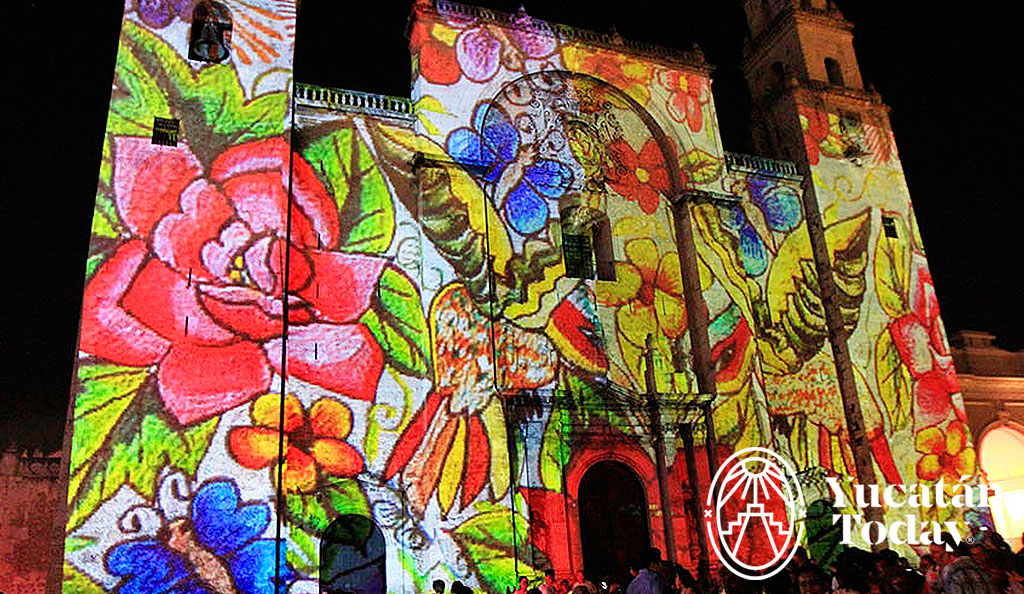
Cultural Week in Merida
Discover the vibrant cultural scene in Mérida with free daily events showcasing music, dance, history, and traditions.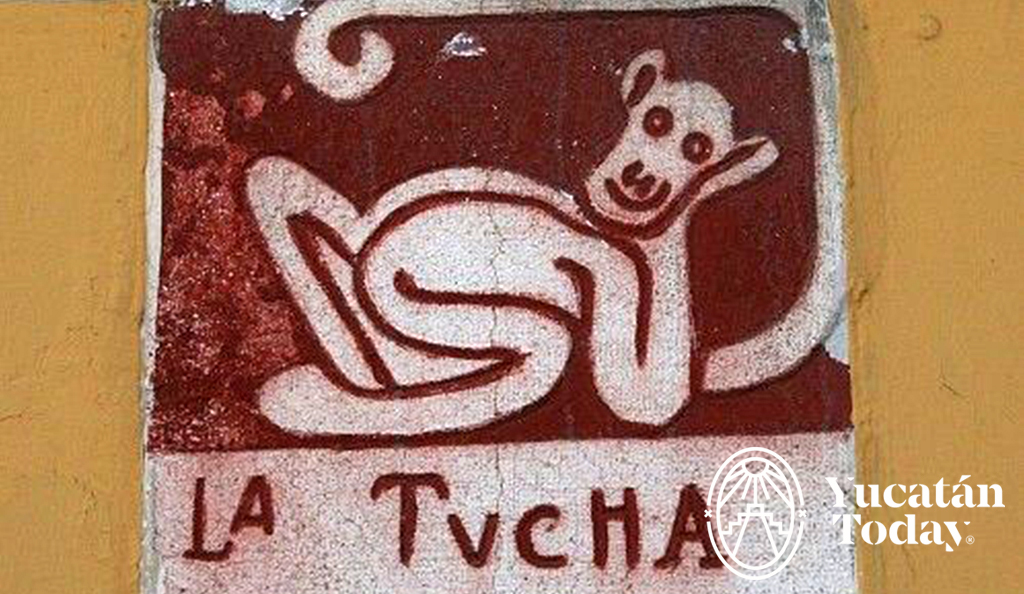
Mérida's Corners, Crossroads of History
Explore the fascinating history behind the unique street corners of Mérida in Yucatán, each intersection tells a story connecting the present to the...